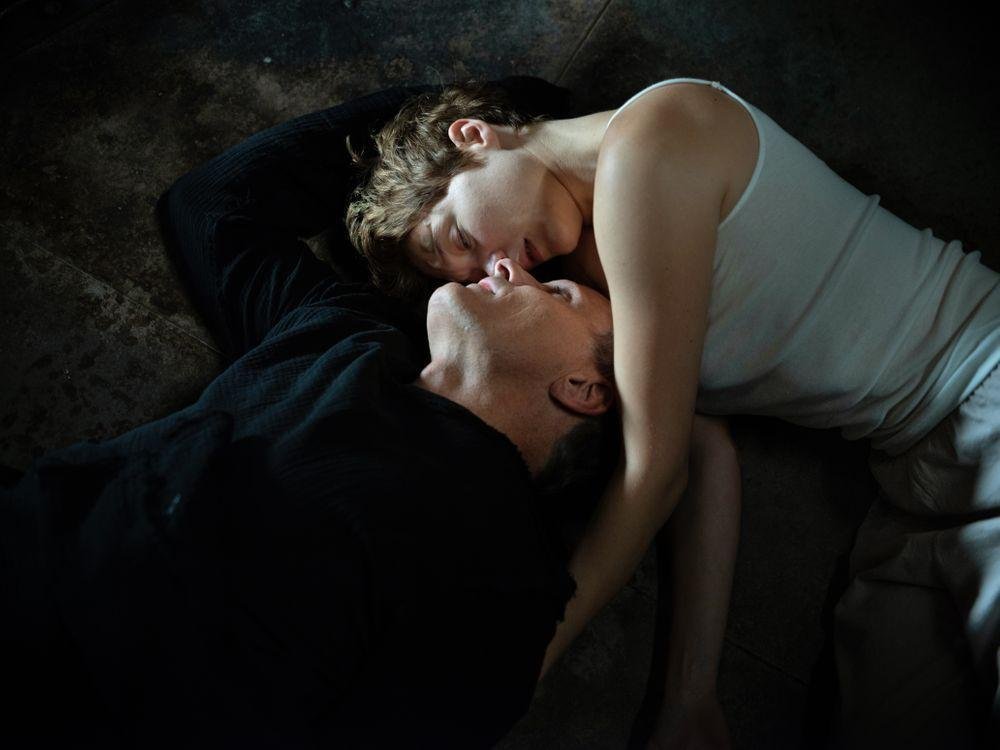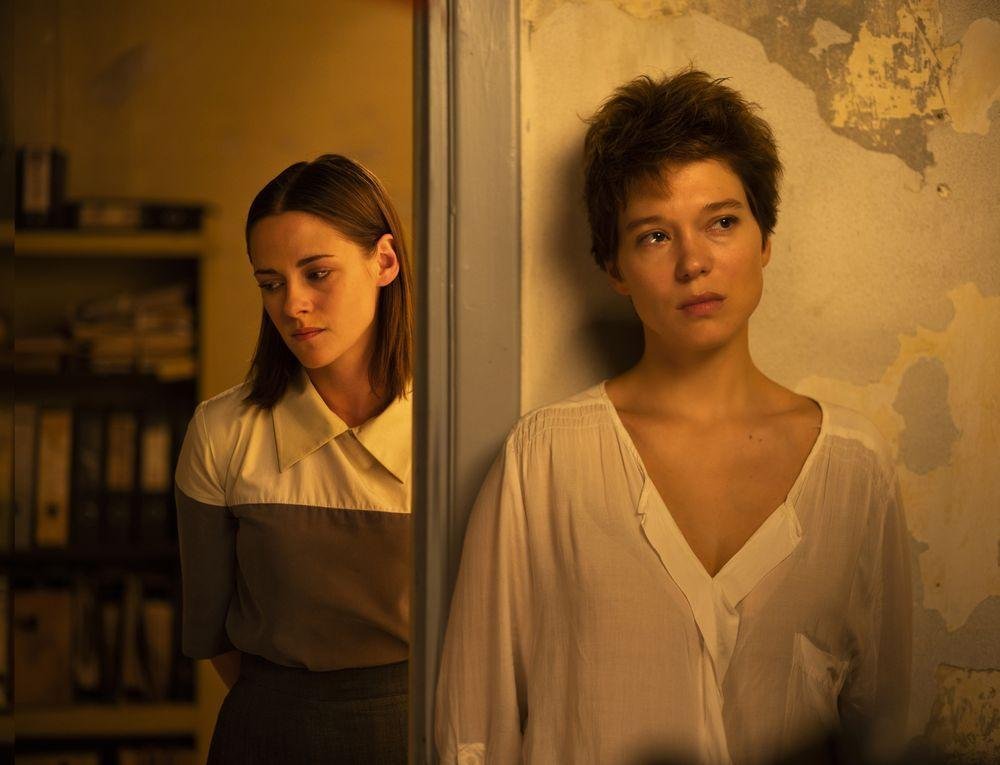Review: Crimes of the Future needs less plot and more squirm
Written and directed by David Cronenberg
Review by Ceridwen Bush
In July 2022, the dim blue-light of Disney+ found the perfect treatment for my hazy COVID brain:
The Fly, 1986, by David Cronenberg
While my brain rotted in a symptomatic COVID soup, there was nothing more comforting than body horror. Was it a sense of kinship with the sweating, pustule-bubbling mutation of Seth Brundle? Maybe it was just nice to remember it can always be worse. Either way, the distorted human body provided much relief to my sickly psyche.
In the canon of body horror, The Fly is a cult classic. Eccentric scientist Seth Brundle accidentally fuses with a housefly in his attempt to invent teleportation. The result is slimy, sweaty, and pus-filled. Even if you haven't seen the original, the Brundlefly mutation has been recreated by The Simpsons in the 'Treehouse of Horror Series', and references to the metamorphism can be found in Black Swan and Rick and Morty.
Geena Davis and Jeff Goldblum in The Fly (1986)
A film that indulges in the grotesque like this is one that specifically requests the audience do most of the work. You watch Jeff Goldblum as Seth drip with insect-ooze, and even though you gag as he peels off his rotting fingernails, you choose to keep watching. It's then up to you to decode your reaction. Why is the human fly so gross? Is Seth infected by the fly, or is it humanity that taints the natural? Is this kind of suffering worse than death?
I do have a point: Cronenberg’s latest body horror indulgence, Crimes of the Future, did not need as much plot as it tries to have.
Cronenberg seems to think less of us than he did in 1986, and tries to spoon-feed us as many internal-metaphor-scenarios as he can. While the film is still an enjoyable watch, I was left wishing for a few less stories and a bit more squirming.
The world of Crimes of the Future registers as one of a sci-fi classic: in an unexplained phenomenon, humanity has deviated from its evolutionary path. Humans have become impervious to infection and physical pain is unheard of. Surgery is performed on grimy sidewalks, biotechnical furniture acts as medical assistance, and artists indulge in strange modifications. The use of CGI in the film, like it's setting, is traditional. The enhancements are quick and delicate, rather than the over-indulgent-cheaply-generated explosions that are popular today.
Inside a pulsating womb sleeps Saul Tensor (Viggo Moretensen). A performance artist, Tensor's "accelerated evolution syndrome" leads to the spontaneous development of new organs. Synced to his body, the "OrchidBed" can detect new hormones, a marker of these growths. The fleshy bed is designed to ease the discomfort that seems to come with this affliction.
His artistic partner and ex-surgeon Caprice (Léa Seydoux) inspects, tattoos, and then removes Tensor's new organs for an audience. Caprice's “canvas” is a the boney, coffin-like "Sarc", originally used in autopsies. Surgery has become the "new sex", and the film flips between Caprice and Tensor’s naked entanglement in the Sarc and their surgical performances.
Tensor has a stifled but recognisable relationship with his body — is he an artist or simply the machinery? Caprice projects a similar predicament — what is the line between pleasure and pain, of art and voyeurism?
Questioning the human condition is archetypal of Cronenberg. But, instead of letting the audience stew in those questions, he uses his protagonists in Crimes as uncharacterised soundboards for misleading plot points and vague reactive moments. Forced, conflicting “decisions” are made in place of development: Caprice moves quickly from being distraught at the sight of a dead boy to performing an autopsy on him, using the same surgical equipment she has “sex” with!
The dead boy is the son-prototype of Lang Dotrice (Scott Speedman), leader of a rebellious group of evolutionary accelerationists. The group surgically alter their digestive systems, allowing them to digest toxic waste. Dotrice believes Tensor's syndrome means he would be able to naturally digest the waste - just as his son could - and he should stop removing his new organs. Caprice and her medical background disagree with this. Similarly, Tensor's often painful rivalry with his own body conflicts with Dotrice's philosophy. They later appear to simply change their minds, and the movie ends with Tensor eating "the plastic".
A lot of the themes also feel forced: there is a vaguely postmodern artist-human-administrative-machine-God-is-Dead-ism feel to the film that is never fully realised. Nonetheless, some small and sickly moments make some amends.
Odd little bureaucrats Timlin and Wippet (Kristen Stewart and Don McKellar) fit into the world as seamlessly as the biotechnical furniture. They are investigators with the National Organ Registry, charged with cataloguing human evolution. Their eccentric dedication to organs is bizarre, even in the sickly world.
Kristen Stewart alone is enough reason to watch Crimes of the Future. Her skin-crawling performance is reminiscent of Jeff Goldblum in The Fly — they don't make us understand, they make us feel. In the stuffy shadows of her office, Timlin sticks her nervous fingers into Tensor's mouth, looking inside for signs of new organ growth. She feverishly licks his saliva off her hands before kissing him. Her awkward desperation is feral. Tensor rejects her advances, saying he is not very good at "the old sex".
Crimes of the Future is a provocative indulgence. It might not have the nauseating body-horror elements to heal you the way Cronenberg’s other work does, but it is still a gratifying formal exploration. Hopefully Cronenberg's comeback is an omen of the return of the gross-out element to horror.
Crimes of the Future is now playing at the Dendy Newtown and in Melbourne at the Cinema Nova.
The Golden Age Cinema and Bar, Surry Hills is hosting a special screening on 2 October 2022.
Official website here.
Images sourced from filmaffinity.com
Ceridwen loves things that are disgusting. She talks really fast and doesn’t mind a space balloon in the park. Find her ranting and raving on Instagram @scrridwen.
We paid Ceridwen $25 for this review.
Wanna write for us? You can have some money too!




